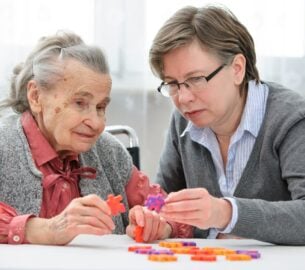After every vacation, you’ll probably wish you could bring the sun, pristine beaches (if that’s where you went) and good times back home with you. If you’re not careful though, you might bring bedbugs back instead.
Bedbugs are found most often in apartments and homes, but there’s a good chance that any bedbugs introduced to your home came from a recent hotel stay or home rental.
But if you learn the facts about bedbugs and know what to look for, you can keep them from hitching a ride back with you and prevent an infestation at home.
Image Credit: AndreyPopov/ iStock.
What Are Bedbugs?

Bedbugs are small, tick-like creatures that feed off human and animal blood. Even though they don’t transmit any diseases, their bites can be irritating. Some people have had allergic reactions to the bites, but the bites mostly itch like the dickens.
They love hiding in mattresses, boxsprings, walls, furniture and other hard-to-find places. They’re stealth biters; they only bite at night and use an anesthetic and an anticoagulant to prevent you from noticing that you were bitten. Sometimes welts don’t show until days after the initial bite.
Image Credit: JasonOndreicka / iStock.
What To Do Before Checking Into A Hotel

- Read hotel reviews. Do some research to see if there have been recent bedbug infestations at the hotel you’re staying at.
- Pack in either large trash bags, zippered plastic bags or hard-cased suitcases. This makes it tougher for bedbugs to hitch a ride back to your home.
Image Credit: HAKINMHAN/ iStock.
What To Do Once You’ve Entered the Hotel Room

- Place luggage in the bathroom while you search the bed.
- Check all sheets, mattresses and boxsprings. Look in the seams and walls surrounding the headboard. Don’t forget to flip over the mattress and check underneath.
- They’re easy to detect, as the sheets are white and bedbugs are reddish-brown.
- Look for exoskeletons (from molting) and dark-brownish spots.
Image Credit: DepositPhotos.com.
If You See One

- Call the front desk of the hotel. Let them help you with the problem. Remember, hotel management is on your side. They want to make sure the infestation doesn’t get out of hand.
- Request to move at least two floors away from the original room. Bedbugs can hide in walls and travel to the room above and below.
Image Credit: DepositPhotos.com.
Once You’re In the Clear

- Put suitcases and luggage on luggage racks or hard surfaces.
- Have fun on vacation!
Image Credit: macniak/istockphoto.
After You Arrive Back Home

- Wash your clothes in the washer (optional).
- Dry clothes in a hot dryer for 30 minutes (mandatory; just washing and air-drying clothes will not work).
- Store your luggage in a hot attic, garage or basement.
- Bedbugs die off in environments over 120° Fahrenheit.
Image Credit: LightFieldStudios/ iStock.
Other Gross Hotel Items

Speaking of nasty stuff in hotel rooms, there are certain spots in every hotel room that collect more bacteria, dust, germs and other gross stuff than others. As you plan your next vacation, keep in mind these items, which tend to be the dirtiest things in a hotel room. You might want to pack some disinfectant wipes in your suitcase after reading about them—or never leave your house again!
Image Credit: Halfpoint / istockphoto.
1. Remote Control

Everyone touches this thing, so it’s no wonder it’s full of germs. In fact, a Today Show investigation found that remotes are the dirtiest thing in hotel rooms. They even found one remote control containing colonies of E. coli—which most often comes from fecal contamination. Again, wipe that thing down before picking it up and using it!
Image Credit: DepositPhotos.com.
2. Hotel Information/Menu Folder

You might not think of room service menus as one of the dirtiest things in a hotel room, but it makes sense. Many people pick up and flip through the hotel information binder. However, it’s not certain how often that book gets a thorough cleaning. There is an easy solution to this problem: Wipe it down with one of those disinfecting wipes you packed before you order your dinner.
Image Credit: LanaStock / istockphoto.
3. Drinking Glasses

Plastic cups may seem cheap, but they actually offer more germ protection than the fancy glasses. An ABC investigation found that some hotels don’t follow health codes when cleaning glasses. The glasses should be cleaned in the dishwasher and sterilized. However, ABC found that some workers didn’t replace glasses between guests; they only wiped them down … sometimes using the same rag used to clean the bathroom! After you check in, go to the front desk and swap those germ-infested glasses for some cups wrapped in plastic.
Image Credit: photographizethis / iStock.
4. Pillowcases

This isn’t from a lack of changing the pillowcases. Clean pillowcases get dirty in the process of changing a bed. How? Housekeepers sometimes put clean pillows with new cases down on adjacent furniture. These chairs are typically not deep cleaned often. As a result, people’s skin cells, hair or other things left behind can get on the clean pillow before it’s put back on the bed. Consider bringing your own pillowcases for a sound—and clean—night’s sleep.
Related: 10 ways to keep cockroaches out of your home
Image Credit: DepositPhotos.com.
5. Phone

Hotel phones are a hotbed of germ activity. Even though everyone has a cell phone these days, hotel guests still use the phone to call the front desk or housekeeping. Hotel phones typically have up to three times as much bacteria as nearby areas. Solution: Use your own phone whenever possible, and wipe down the hotel phone before you touch it.
Related:
- Ready to travel? These 5-star hotels come at 3-star prices
- You can live at NYC’s famous Plaza Hotel, but it will cost you
This article
originally appeared on SimpleMost.com and was
syndicated by MediaFeed.org.
Image Credit: vkoletic / iStock.














